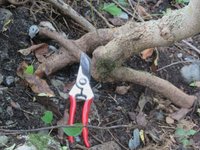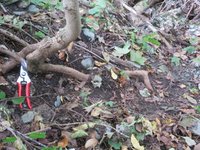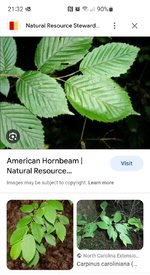Javaman4373
Shohin
I have been poking around in our landscape and always keeping an eye out for potential bonsai material. Today I noticed two trees that I am considering collecting. The first is a maple, that presents problems and is a rather bizarre specimen. It is growing in the bank of the brook and any feeder roots will be some distance from the trunk. In the first photo, the roots growing to the right are going into the bank. The long surface root on the right grows right into the brook. It does have a root going down into the soil about 10 inches from its source. Two questions: 1. can you envision this tree in a pot, maybe a root over rock?, and 2. do you think it could be successfully collected?
Tree number 2: This tree has a nice flare at the base and some movement of the trunk. I am not sure of the species. The elms of this caliber on our land already have a rough bark. The teeth on the leaves seems to fine to be a beech. In any case, the collection of this tree seems it would be straight forward.
Tree number 2: This tree has a nice flare at the base and some movement of the trunk. I am not sure of the species. The elms of this caliber on our land already have a rough bark. The teeth on the leaves seems to fine to be a beech. In any case, the collection of this tree seems it would be straight forward.





